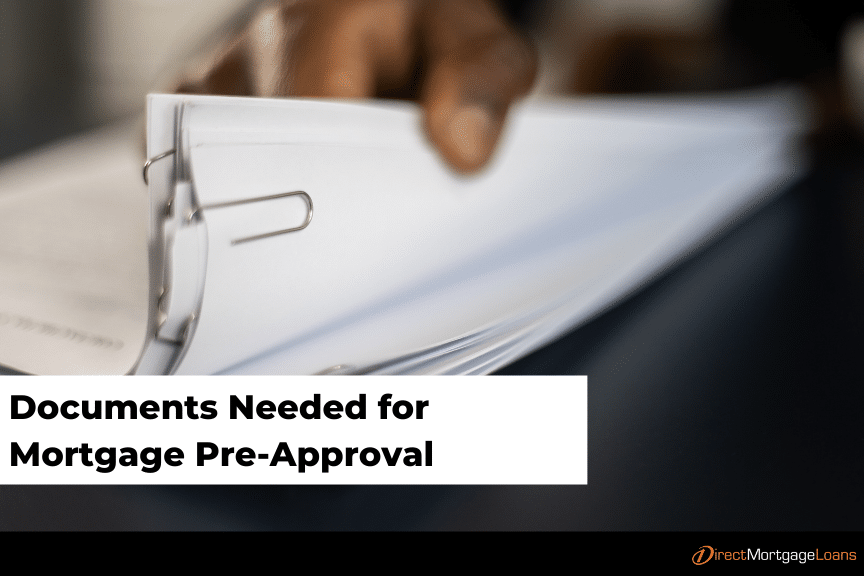7 Essential Tips for Managing Old Mortgage Paperwork

Are you wrestling with a pile of old mortgage paperwork? Managing mortgage documents can feel like an overwhelming task, but it’s an essential aspect of being a homeowner. Properly organizing, storing, and understanding your mortgage documents can save you time, money, and prevent potential legal issues. Here are seven tips to help you take control of your mortgage records efficiently.
1. Understand the Importance of Each Document

Mortgage documents are not just pieces of paper; they are legal records detailing your home loan agreement:
- Mortgage Agreement: This outlines the terms of your loan, including interest rate, repayment schedule, and foreclosure conditions.
- Loan Estimates: Disclosure forms provided by your lender that detail the costs associated with obtaining the loan.
- Closing Disclosure: A form that outlines final loan terms, your monthly payments, and all closing costs.
- Property Deed: This proves ownership of your home.
- Insurance Policies: Documents related to your homeowner’s insurance, flood insurance, and possibly mortgage insurance.

Understanding these documents ensures you’re aware of all your financial obligations and rights.
2. Create a Dedicated Filing System

A filing system can make managing your mortgage paperwork much easier:
- Use a File Cabinet: Invest in a good quality file cabinet or drawer. Label drawers or file folders clearly:
- File Categories: Create separate categories for each type of mortgage document, such as “Closing Documents”, “Annual Statements”, “Correspondence”, etc.
- Color Code: Assign colors to different categories to visually distinguish them. For example, use red for urgent or time-sensitive documents.
| Category | Example Documents |
|---|---|
| Loan Origination | Good Faith Estimate, Loan Application, Initial disclosures |
| Closing Documents | Settlement Statement, Closing Disclosure, Mortgage Note |
| Insurance | Homeowner’s Insurance Policies, Premium Notices |
| Correspondence | Bills, Payment Statements, Notices from Lender |

⚠️ Note: Keep digital copies of your mortgage documents as a backup; they can be quickly accessed and are safer from physical damage.
3. Digital Storage Solutions

Going digital can simplify access to documents:
- Scan Documents: Use a scanner or smartphone app to digitize paper documents.
- Cloud Storage: Services like Dropbox, Google Drive, or iCloud allow easy access from anywhere, and many offer version history and sharing capabilities.
- Encryption and Security: Ensure your digital documents are stored securely to protect against cyber threats.
4. Implement a Document Retention Policy

Knowing how long to keep each document can prevent unnecessary clutter:
- Permanently Keep: Mortgage documents like the mortgage note, deed, and title insurance policy.
- 7-10 Years: Tax returns, loan applications, and closing statements.
- 3-5 Years: Insurance policies, payment records, and lender correspondence.
5. Regularly Review Your Documents

Set a schedule to review your mortgage paperwork:
- Annual Review: Check for changes in rates, terms, or any discrepancies.
- After Life Changes: Life events like marriage, divorce, or death should prompt you to review and possibly update your documents.
6. Address Outstanding Issues

If there are unresolved issues:
- Settle Disputes: Deal with any unresolved disputes or concerns immediately. This could include disputes over charges or errors in statements.
- Update Contact Information: Ensure your lender has your current contact information.
- Record Keeping: Keep detailed notes of any communication or actions taken regarding issues with your mortgage.
7. Prepare for the Future

Plan ahead to avoid future complications:
- Estate Planning: Consider how your mortgage will be handled if something happens to you. Ensure your will or trust documents mention your mortgage.
- Refinancing Considerations: Understand that refinancing requires gathering many documents again, so maintaining a well-organized system will ease this process.
- End of Loan Life: Keep records for the life of the loan, and even after, for historical or legal reference.
By implementing these seven essential tips for managing old mortgage paperwork, you can streamline your homeownership experience. Organizing, understanding, and regularly reviewing your mortgage documents will not only give you peace of mind but also make your financial life much easier to manage. It's about taking proactive steps now to save time and avoid headaches in the future, ensuring you're always in the know about your home loan status.
How long should I keep my mortgage documents?

+
Keep mortgage documents like the mortgage note, deed, and title insurance policy permanently. Other documents like tax returns, loan applications, and closing statements should be retained for at least 7-10 years, while insurance policies and lender correspondence can be kept for 3-5 years.
What should I do if I lose important mortgage documents?

+
Contact your lender immediately. Most lenders maintain digital records of your documents, which they can provide to you. If digital records are unavailable, you might need to use backup copies or ask for reissued documents, which might require additional legal steps.
Is it safe to keep mortgage documents digitally?

+
Yes, as long as you use secure storage solutions with encryption. Cloud services like Dropbox or Google Drive offer security measures to protect your files. Also, maintain strong passwords and possibly two-factor authentication for added security.



